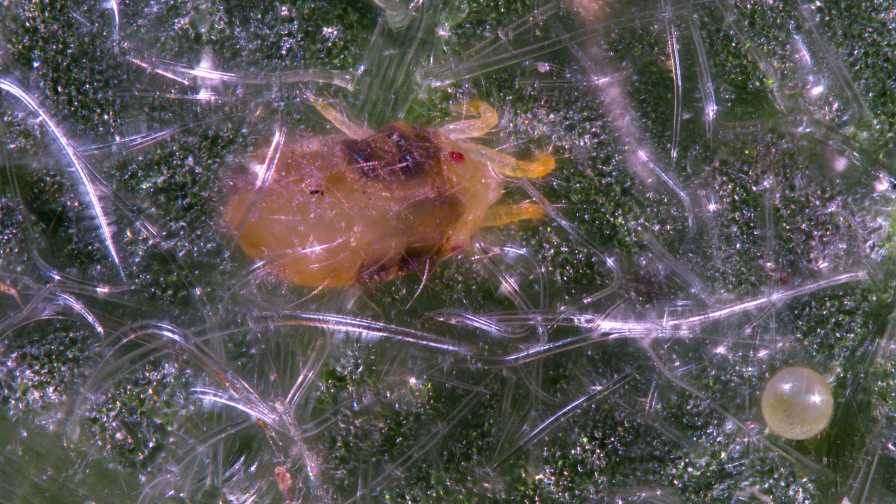Five Ways to Control Mites in the Greenhouse, Courtesy of the Experts
 Crop protection technical experts and suppliers weigh in with their best advice for managing mites in the greenhouse.
Crop protection technical experts and suppliers weigh in with their best advice for managing mites in the greenhouse.
1. Treat upon receipt.
“More facilities are treating [unrooted cuttings, liners, transferred stock] at unloading when the plants come out of boxes or bags or off the carts,” says Jen Browning, Technical Service Specialist and resident entomologist at BASF. “Treating new material is becoming like hand sanitizer, and more operations do it routinely to avoid problems.”
2. Battle with the correct tools.
“Growers need to understand the type of mite they want to control,” says Mark Brotherton, Senior Portfolio Leader at SePRO. “Effectiveness of miticides and BCAs can be specific to the type or species of mite. Understanding what you are battling allows you to choose the best solution.”
3. Rotate products with different modes of action.
“Begin applications with a product that has activity on adult and immature mobile stages, then rotate to a product with activity on eggs and immatures,” says Nancy Rechcigl, Field Technical Manager, Ornamentals for Syngenta Professional Solutions.
“Some may like to combine these as a spray, but keep in mind that spray coverage is your biggest limiting factor, so this does not help control the infestation any faster, and you are using up your allowances for that product.”
4. Not all oils are created equal.
BioWorks’ Technical Services Team recommends a test spray on a small number of plants and waiting several days to a week to see if phytotoxicity shows up before spraying miticide products full scale because some plant species and varieties are more susceptible to phytotoxicity than others. Always test at the same rate and under similar conditions as your final spray, and remember that oils can react negatively to some chemistries or sulfurs, so be sure to read the label before use.
5. The better the spray coverage, the better the product efficacy.
“Mites are so small and reproduce so fast that missing one lower leaf full of mites may make the difference between great and poor efficacy,” says Carlos E. Bográn, OHP Inc. Sr. Technical Manager. “Take the time to make one or two great applications instead of poor multiple applications that increase the risk of resistance.”
Daniel Peck, Director of Field Development at Vestaron, agrees with Bográn, saying that the performance of contact insecticides, with no known systemicity, requires complete coverage. The product must reach the target, for instance, whether on the topside or underside of the leaf. The use of fogging or ultra-low-volume sprays is one way to achieve this.










